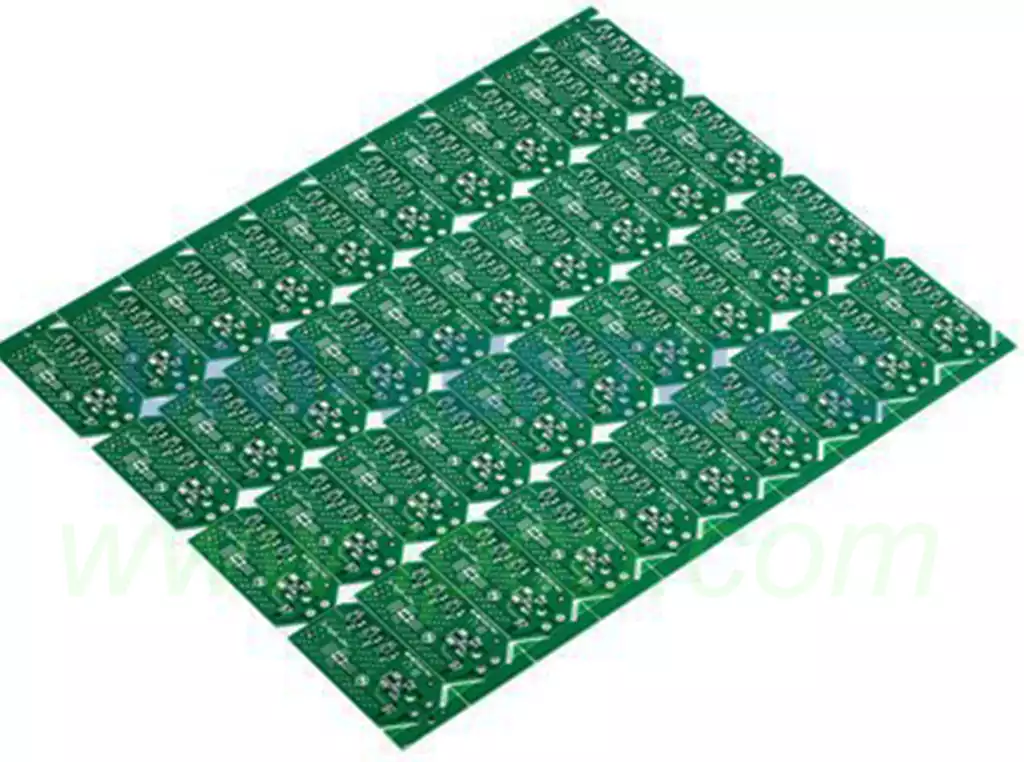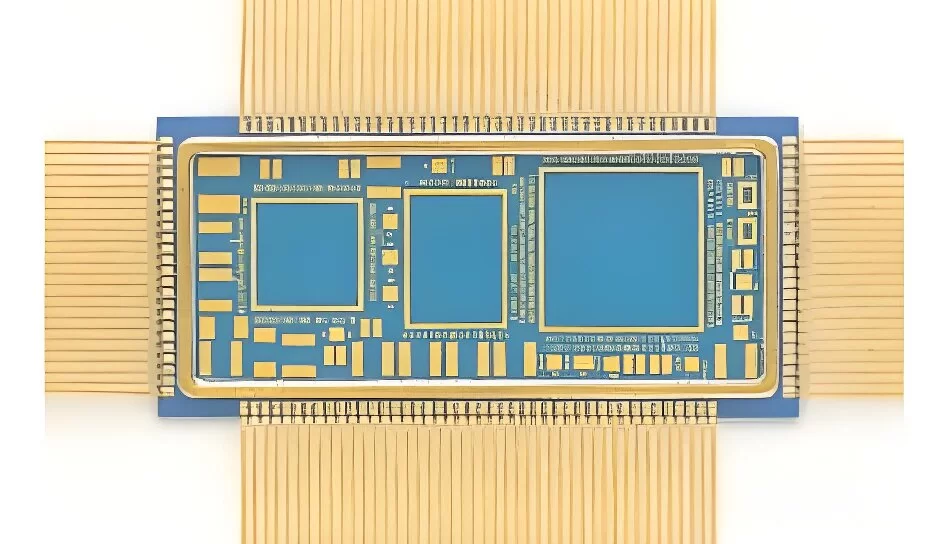Onboard antennas are built directly into the vehicle’s electronics system. Unlike traditional external antennas that protrude from the vehicle, onboard antennas are seamlessly integrated within the vehicle’s design. This integration not only enhances the vehicle’s aesthetics but also improves its functionality.
Types of Onboard Antennas
PCB Antennas: These are compact antennas printed directly onto a circuit board. PCB antennas are widely used due to their small size and efficiency. They are particularly beneficial in environments where space is limited but high performance is required. Their design allows for precise control over signal pathways, resulting in enhanced efficiency and reduced signal loss.
Ceramic Antennas: Often seen in devices like the Adafruit CC3000 WiFi breakout, these antennas are known for their precision and reliability. Ceramic antennas are made from materials that allow them to maintain stable performance over a wide range of temperatures and environmental conditions. This makes them ideal for automotive applications where temperature fluctuations can be significant.
Chip Antennas: Small and efficient, chip antennas are integrated into the vehicle’s electronic systems and are often used for GPS and satellite radio. They are designed to operate at various frequencies, providing flexibility and adaptability to different communication needs. Their compact size allows them to be used in various parts of a vehicle, offering designers more freedom in vehicle design.
Integration with Vehicle Systems
Onboard antennas are not standalone components; they are integral parts of a vehicle’s communication network. Their integration ensures seamless interaction with the vehicle’s internal systems. This connectivity allows for real-time data exchange, which is essential for the operation of modern infotainment and navigation systems. The integration also facilitates easier updates and upgrades, as onboard antennas can be reprogrammed or adjusted via software changes.
Aesthetic and Functional Design
The shift to onboard antennas marks a significant leap in both aesthetic and functional design. By eliminating the need for external protrusions, vehicles maintain a streamlined and modern appearance. This not only appeals to consumer preferences for sleek designs but also contributes to improved aerodynamics. Improved aerodynamics can lead to better fuel efficiency and reduced wind noise, enhancing the overall driving experience.
Benefits of Onboard Antennas
Improved Aesthetics and Design
One of the most noticeable advantages of onboard antennas is their impact on vehicle design. Traditional antennas can be bulky and detract from a vehicle’s sleek appearance. Onboard antennas, however, are hidden within the vehicle’s body, maintaining a clean and modern look.
Streamlined Vehicle Exteriors
Onboard antennas allow automakers to create vehicles with smooth, uninterrupted lines. This design choice not only improves the car’s visual appeal but also enhances its aerodynamic efficiency, which can contribute to improved fuel economy. By reducing drag, vehicles can achieve better performance and handle more efficiently at higher speeds.
Customization and Branding Opportunities
The integration of onboard antennas provides manufacturers with greater flexibility in vehicle design. Without the constraints of traditional antenna placement, designers can experiment with unique body shapes and styling elements that differentiate their vehicles from competitors. This freedom supports brand identity and allows for greater customization options for consumers.
Enhanced Signal Reception
Onboard antennas are designed to provide superior signal reception. Their integration into the vehicle allows for optimal positioning, reducing interference and improving connectivity. Whether it’s for GPS navigation, satellite radio, or internet access, onboard antennas ensure a strong and stable connection.
Optimal Signal Placement
The placement of onboard antennas within a vehicle is strategically determined to maximize signal strength and minimize interference. By positioning antennas in areas less susceptible to obstructions, vehicles can maintain clear and consistent communication channels. This is crucial for applications requiring continuous connectivity, such as navigation and emergency communication systems.
Reduction in Signal Interference
Onboard antennas benefit from advanced materials and design techniques that minimize interference from other electronic systems in the vehicle. This ensures that the signals remain strong and clear, even in densely populated urban areas where interference is more common. The result is a reliable communication system that drivers can depend on in various environments.
Increased Durability
External antennas are prone to damage from weather, car washes, and even vandalism. Onboard antennas, protected within the vehicle’s structure, are far less susceptible to such damage. This increased durability translates to longer-lasting performance and reduced maintenance costs.

Protection Against Environmental Factors
Onboard antennas are shielded from external elements such as rain, snow, and dirt, which can degrade the performance of traditional antennas. This protection ensures consistent performance regardless of weather conditions, providing drivers with reliable connectivity at all times.
Longevity and Cost Savings
By reducing the likelihood of damage, onboard antennas contribute to the vehicle’s overall longevity. This durability can lead to significant cost savings over the vehicle’s lifespan, as there is less need for repairs or replacements. Moreover, their placement within the vehicle makes them less vulnerable to theft or vandalism, further enhancing their value.
Space Efficiency
The compact design of onboard antennas, especially PCB and chip antennas, saves valuable space within the vehicle. This efficiency is particularly beneficial in electric vehicles (EVs) where space is at a premium due to the presence of large battery packs.
Maximizing Interior Space
Onboard antennas require less physical space, allowing for more room within the vehicle’s interior for other components or passenger comfort. This is particularly advantageous in smaller vehicles or those with complex electronic systems, where every inch of space is critical.
Facilitating Advanced Technologies
The space saved by onboard antennas can be reallocated to incorporate additional technologies, such as sensors for advanced driver-assistance systems (ADAS) or enhanced infotainment options. This integration supports the development of smarter, more feature-rich vehicles that cater to modern consumer demands.
Integration with Modern Technology
Modern vehicles are equipped with a plethora of technological features, from advanced driver-assistance systems (ADAS) to infotainment systems. Onboard antennas seamlessly integrate with these technologies, providing reliable connectivity and enhancing their functionality.
Enabling Advanced Driver Assistance Systems (ADAS)
Onboard antennas play a vital role in supporting ADAS by ensuring consistent communication with external sensors and systems. This allows for real-time data processing and rapid response to driving conditions, improving safety and efficiency on the road.
Enhancing Infotainment and Connectivity
The seamless integration of onboard antennas with infotainment systems allows for uninterrupted access to streaming services, internet browsing, and real-time traffic updates. This connectivity transforms the vehicle into a mobile entertainment hub, enhancing the passenger experience.
Real-World Applications
Adafruit CC3000 WiFi Breakout
The Adafruit CC3000 WiFi breakout with onboard ceramic antenna is a prime example of how onboard antennas are used in modern technology. This device allows for easy integration of WiFi connectivity in various applications, from vehicles to smart home devices. Its onboard ceramic antenna provides reliable performance in a compact form factor, making it ideal for space-constrained environments.
Versatility in Application
The Adafruit CC3000 WiFi breakout’s compact size and reliable performance make it suitable for various applications beyond automotive use. Its integration into smart home devices and IoT applications highlights the versatility of onboard antennas in enhancing connectivity across different sectors.
Simplifying Connectivity Solutions
By providing a straightforward solution for integrating WiFi connectivity, the Adafruit CC3000 WiFi breakout demonstrates the ease with which onboard antennas can be utilized. This simplicity encourages innovation and experimentation in technology development, paving the way for new applications and solutions.
Automotive Navigation Systems
Onboard antennas are integral to modern automotive navigation systems. They provide precise GPS signals, enabling accurate real-time navigation. This precision is crucial for features like turn-by-turn directions and traffic updates, enhancing the overall driving experience.
Real-Time Navigation Accuracy
The precision of onboard antennas ensures that navigation systems provide accurate, real-time directions. This accuracy is essential for efficient route planning and timely arrival at destinations, especially in unfamiliar areas or complex road networks.
Supporting Advanced Navigation Features
Onboard antennas enable advanced navigation features such as predictive traffic alerts, route optimization, and integration with other smart systems. These capabilities enhance the driving experience by providing drivers with the information they need to make informed decisions on the road.
Vehicle-to-Everything (V2X) Communication
As vehicles become more connected, the need for efficient communication systems grows. Onboard antennas facilitate Vehicle-to-Everything (V2X) communication, allowing vehicles to communicate with each other and with infrastructure. This communication is vital for developing autonomous driving systems and improving road safety.
Enabling Autonomous Vehicle Networks
Onboard antennas are key to the development of autonomous vehicle networks, where vehicles communicate with each other and infrastructure to optimize traffic flow and safety. This communication reduces the risk of accidents and improves the efficiency of transportation systems.
Enhancing Road Safety and Efficiency
V2X communication facilitated by onboard antennas allows for real-time exchange of information about road conditions, traffic signals, and potential hazards. This information enables vehicles to adapt quickly to changing conditions, enhancing road safety and reducing congestion.
Challenges and Considerations
While onboard antennas offer numerous benefits, there are challenges to consider. The integration of these antennas requires careful design and testing to ensure optimal performance. Additionally, as vehicles become more connected, the demand for bandwidth and data security increases. Manufacturers must address these issues to fully realize the potential of onboard antennas.
Design and Testing Complexities
The integration of onboard antennas involves complex design and testing processes to ensure compatibility with existing vehicle systems. Manufacturers must carefully balance performance, size, and placement to achieve optimal results, which can be challenging given the diverse range of vehicle models and configurations.
Bandwidth and Data Security Concerns
As vehicles become more connected, the demand for bandwidth increases, necessitating the development of more robust communication networks. Additionally, the need for secure data transmission is paramount, as vehicles exchange sensitive information that could be targeted by cyber threats. Manufacturers must invest in advanced security measures to protect vehicle networks and ensure data integrity.
Future Trends
The future of onboard antennas in vehicles looks promising. As 5G technology becomes more widespread, onboard antennas will play a critical role in enabling high-speed, low-latency communication. This advancement will further enhance features like real-time traffic updates, remote diagnostics, and autonomous driving capabilities.
Impact of 5G Technology
The rollout of 5G technology will revolutionize vehicle communication systems, offering faster data transmission speeds and lower latency. Onboard antennas will be essential in harnessing the full potential of 5G, supporting more advanced features and improving overall vehicle connectivity.
Advancements in Electric and Autonomous Vehicles
As the automotive industry shifts towards electric and autonomous vehicles, the need for efficient, reliable communication systems will only grow. Onboard antennas will be at the forefront of this technological evolution, driving innovation and improving the driving experience.
Innovations in Antenna Design
Future advancements in materials and design will lead to even more compact and efficient onboard antennas. These innovations will support the integration of multiple communication systems within a single vehicle, enhancing connectivity and functionality.
Onboard antennas represent a significant advancement in automotive technology. Their ability to enhance design, improve connectivity, and integrate with modern technology makes them an essential component of modern vehicles. As the automotive industry continues to evolve, onboard antennas will play a pivotal role in shaping the future of transportation.
Incorporating onboard antennas into vehicle design not only improves functionality but also sets the stage for future innovations. As we move towards a more connected and autonomous future, onboard antennas will remain a cornerstone of automotive technology, ensuring that vehicles stay ahead in the fast-paced world of technological advancement. These innovations will continue to redefine the driving experience, making vehicles safer, more efficient, and more enjoyable for drivers and passengers alike.



